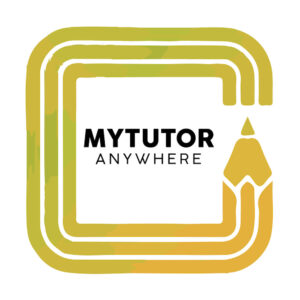What Are the Benchmarks Assessments for the Orton-Gillingham Approach?
The Orton-Gillingham approach is an innovative approach that can help many struggling students start seeing success in the classroom. This article will walk you through the key phases of assessment that help Orton-Gillingham tutors personalize their curriculum to a student’s needs and ability level.
Understanding the Orton-Gillingham approach

For many students, learning to read can be a challenging, overwhelming process. Students with learning disabilities like dyslexia may run into even more complications in the classroom.
The Orton-Gillingham approach pioneers a new way to help students overcome barriers to learning to read. Instead of relying on traditional strategies to encourage students to start recognizing new words and word parts, the Orton-Gillingham approach draws on a host of multi-sensory techniques to help students make connections between letters and their corresponding sounds.
According to the approach, reading tutors meet regularly with struggling students and work with them to start learning basic reading skills. The approach is designed for students to receive one-on-one guidance from a tutor so that they can get motivated again.
One-on-one attention helps many students overcome barriers to learning that have led them to struggle in the classroom. Struggling students often have difficulty finding the motivation to persist and can lose confidence in their work and their ability.
The Orton-Gillingham approach offers students an alternative way to learn, empowering them to learn in a way that better suits them and helps restore their motivation. Instead of just telling students the sound a particular letter makes, reading tutors will help their students experience that connection. Students may learn the letter r by playing with rice or the ‘sh’ sound by playing with shadows.

These multi-sensory experiences rely on touch, sight, hearing, and taste to help students make deeper connections between word parts, their sounds, and their functions in words. Students with dyslexia are the most likely to benefit from this innovative approach, but those with other learning disabilities, special needs, or challenges learning to read can also benefit from it.
Key benchmark assessments for the Orton-Gillingham approach
When a reading tutor first starts meeting with a student, they will have to conduct a series of benchmark assessments to get an idea for the student’s skill and ability level. Here are some common assessments that tutors will use to identify useful starting points for students according to the Orton-Gillingham approach:
Phonemics awareness test that measures blending and segmenting abilities
This test is one of the preliminary baseline assessments that reading tutors use to evaluate how successfully students can decode words and sentences into smaller segments. Students will often be asked to blend phonemes. For example, “How do you say this word? P-e-t.” This task tests whether students can blend individual letter sounds to create full words.
A reading tutor may also ask a student to segment words. This means students will be asked to identify the sounds in a word like “cap,” for example. This task helps tutors evaluate the student’s ability to break down the words they come across. Both blending and segmenting are key skills needed to navigate the process of learning to read. A phonemic awareness test can pinpoint which skills students are struggling with the most.
Single word assessments
Many reading tutors will also ask students to go through a single word assessment. During this evaluation, students will be asked to read a handful of words that increase in difficulty. Students with reading challenges may struggle to make it through the list. Reading tutors can indicate their student’s skill level based on where students begin having trouble in the list.
Gauging familiarity with lists of high-frequency words
When students are first beginning to read, they must learn to master words that frequently show up in written texts. One way to evaluate a student’s reading skill level is to test their familiarity with lists of high-frequency words.
If a student is struggling to recognize and pronounce high-frequency words, they will likely not be able to read fluently and may experience more frustration and discouragement during the reading process. These feelings can interfere with their motivation and confidence, leading to worse performance, as well.
Spelling inventories
Another key metric reading tutors can use to evaluate a student’s reading ability is a spelling inventory. During this assessment, a reading tutor will call out a list of words that range in difficulty. Students will then be asked to spell them as best they can. The tutor can then identify which spelling structures and reading skills might be most difficult for that student.
Reading aloud short passages
For older students who are in the process of translating basic reading skills into more complex reading abilities, reading tutors will commonly test their reading level with short passages. Students will be asked to read aloud and decode short passages to determine their reading fluency level. Students may struggle to read through the passage or may make frequent reading errors. A reading tutor will judge the student’s starting point in the Orton-Gillingham approach based on their performance.
Assessment for the Orton-Gillingham Approach at My Tutor Anywhere
At My Tutor Anywhere, your student’s needs and education are the top priority. We understand that each student has unique needs, abilities, and skills and work hard to meet those needs in the most developmentally appropriate way.
Many other parents have already trusted their child with our services, and we have an impressive track record of developing positive working relationships with our students and helping them thrive in the classroom.
Each student will receive a personalized tutoring plan based on their individual assessments and evaluation. Our services are reasonably priced and designed to offer struggling students the encouragement, support, and guidance they need to succeed. With regular one-on-one attention, students are better able to find the motivation to continue learning and making progress.
Students shouldn’t have to struggle with reading by themselves. Reach out to us today to start developing an individualized plan that will help your student get back in control of their own learning!

